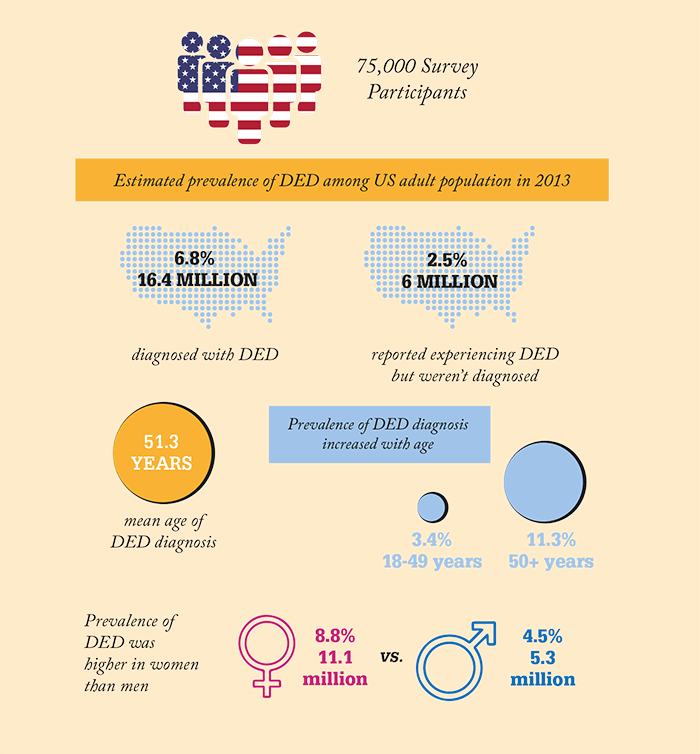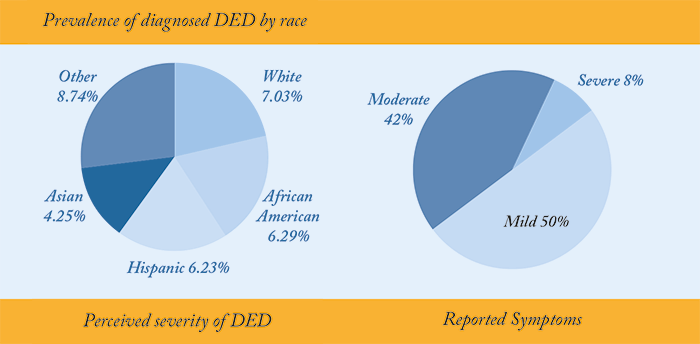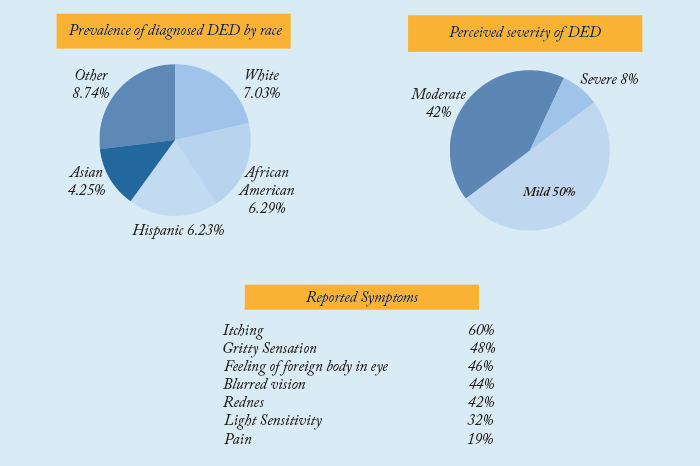
Awareness of (and interest) in dry eye disease (DED) has been on the rise over recent years – and is showing no signs of slowing down. But how many people actually have it and to what degree? A recent study (1) has provided some answers…
In a bid to provide current estimates on the prevalence of DED among adults (over 18 years of age) in the US, a collaborative team of researchers analyzed 75,000 survey respondents from the National Health and Wellness Survey (NHWS). Participants were asked whether they had ever experienced dry eye, and “Yes” responders were then asked a series of questions on diagnosis, severity and symptoms. Analyzing the data, the team calculated overall prevalence of diagnosed DED, and using census data for 2013, estimated its prevalence among US adults and demographic populations. The key findings are summarized in the infographic below.


References
- KF Farrand et al., “Prevalence of diagnosed dry eye disease in the United States among adults aged 18 years and older”, Am J Ophthalmol, Epub ahead of print (2017). PMID: 2870566
